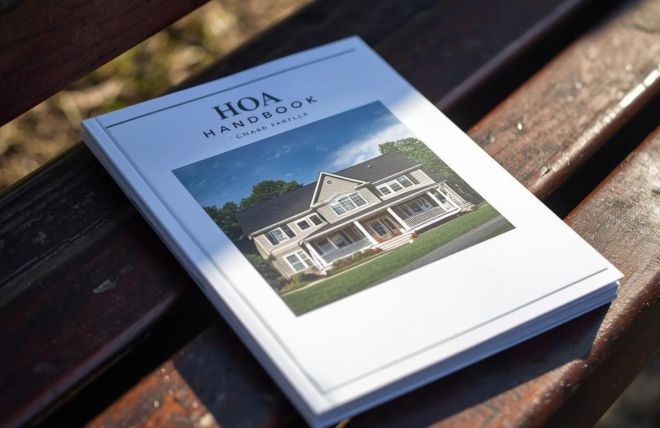When you move into a community with a homeowners association (HOA), you may not realize that the HOA isn't always run by the homeowners from day one. In fact, many communities start out under the control of the developer, who manages key aspects of the community’s governance, finances, and operations. Over time, this control is transferred to the homeowners, and that process is known as HOA transition.
The HOA transition is a critical stage in a community’s development, and understanding it can make a big difference for homeowners and developers alike. Let’s dive into what HOA transition is, why it matters, and what both parties can do to ensure it’s a smooth process.
What is HOA Transition?
HOA transition is the process of transferring control of a homeowners association from the developer to the homeowners. It typically happens once a certain percentage of homes in the community have been sold, usually around 75%. During this period, responsibility for the governance, finances, and operations of the community shifts from the developer-appointed board to a homeowner-elected board.
The transition is not just a one-day event; it’s a multi-stage process that can take several months or even years to complete. This gradual handover allows homeowners to become familiar with their roles, responsibilities, and the inner workings of the association before fully taking over.
Why Does HOA Transition Matter?
- Ensuring Long-Term Community Success – A well-managed transition sets the foundation for the community's long-term health. Homeowners take over the financial and operational duties, ensuring that the services and amenities are maintained and that the community continues to function smoothly after the developer steps back.
- Empowering Homeowners – Once the transition is complete, homeowners have full control over the governance of their community. This means they can elect their own board members, set priorities for the community, and make decisions that directly impact their neighborhood. It’s a significant step towards building a stronger sense of ownership and community engagement.
- Protecting Homeowner Interests – During the transition, homeowners gain access to important financial records, legal documents, and contracts that were managed by the developer. This transparency is crucial in identifying potential issues, such as underfunded reserves or unresolved maintenance problems. By taking control, homeowners can protect their property values and ensure that the community is being managed in their best interests.
- Avoiding Legal and Financial Pitfalls – A poorly managed transition can lead to legal disputes, financial problems, and even construction defects being overlooked. It’s essential that homeowners conduct thorough inspections and reviews during the transition to ensure that all common areas, amenities, and infrastructure are in good condition. New boards should also be aware of federal filing requirements under the Corporate Transparency Act. FileForms makes it easy to file your BOI with FinCEN and stay compliant from day one.
HOA Transition Checklist
Planning an HOA Transition? Save time and effort with our ready-to-use template! Customize it with your event details and share it with your community.
Key Stages of HOA Transition
Understanding the stages of HOA transition can help homeowners and developers ensure a smooth handover. Here’s what typically happens during the process:
Phase I: Pre-Transition
1. Developer Control
At the beginning, the developer is in charge of the HOA. They appoint board members, transition finances, and maintain the community’s common areas. Homeowners usually have little say in how things are run during this stage.
Simplify Dues Collection with Zero Hassle
Tired of chasing checks and logging manual payments? Use Melio to accept online HOA dues and vendor payments with ease — no subscription, no setup fees, just smooth transactions.
2. Building the Transition Team
As the community grows and more homes are sold, the developer will begin preparing for the transition. This involves forming a hoa transition team, which may include homeowners, legal advisors, and property management experts. The team works together to ensure that the transition follows legal guidelines and that the homeowners are ready to take control.
3. Homeowner Involvement
Homeowners will start to take on more responsibilities, often by joining advisory committees or even the board of directors. This gradual involvement helps them understand the inner workings of the HOA and prepares them for full governance.
Phase II: The Turnover Meeting
4. Turnover
At a designated point—often when a certain percentage of homes are sold—the developer will transfer control of the HOA to the homeowners. This is a formal process that may involve handing over financial records, legal documents, maintenance reports, and more. A homeowner-elected board will now be responsible for managing the community.
5. Post-Transition Responsibilities
Even after the formal turnover, there are often lingering responsibilities that the developer and homeowners need to work through. These might include resolving construction defects, finalizing financial settlements, and ensuring that the community’s infrastructure is complete.
How Homeowners Can Prepare for HOA Transition
Homeowners can play an active role in ensuring a successful transition by:
- Reviewing governing documents: Understand your community’s bylaws, rules, and regulations.
- Assessing the budget and reserve funds: Make sure there’s enough money set aside for future repairs and maintenance.
- Forming committees: Committees such as finance, maintenance, and communications can help ease the transition.
- Hiring professionals: Consider bringing in legal, financial, and property management experts to guide the transition process.
Why Developers Should Care About Transition
For developers, a successful HOA transition can enhance their reputation and leave behind a well-managed, thriving community. This not only ensures satisfied homeowners but can also boost the value of remaining homes in the development. By following best practices and maintaining open communication with homeowners, developers can avoid legal issues and build trust within the community.
HOA transition is a pivotal process that affects the long-term health and success of any homeowners association. Whether you’re a homeowner or a developer, understanding the ins and outs of this transition is crucial to ensuring a smooth handover of responsibilities. By being proactive, transparent, and collaborative, both parties can ensure that the community thrives under homeowner governance.
For more resources on HOA management, check out our HOA Management Company Screening Checklist and learn how to hire the right professionals for your community.








